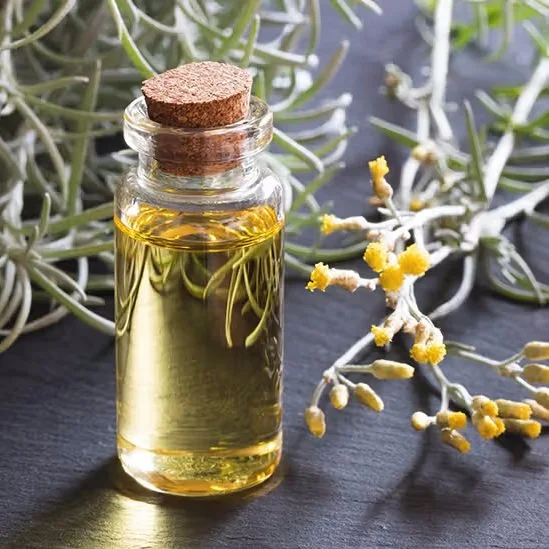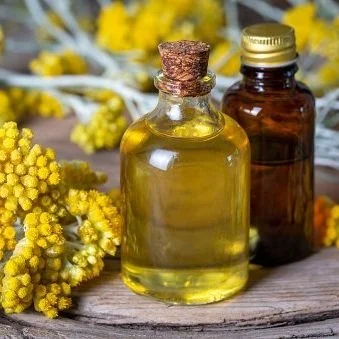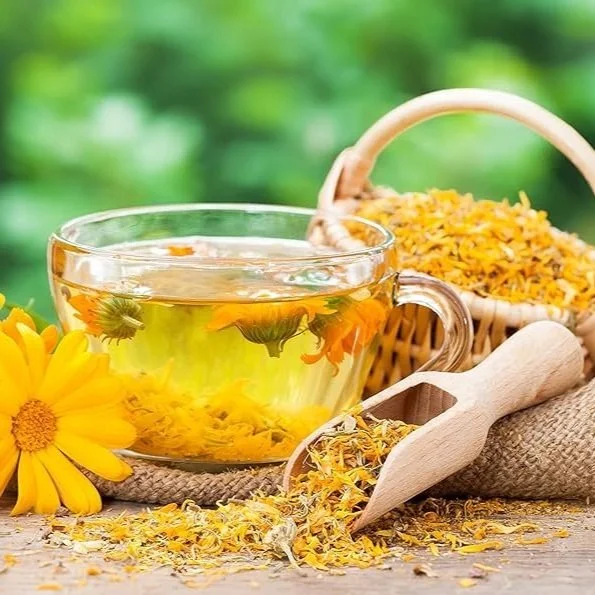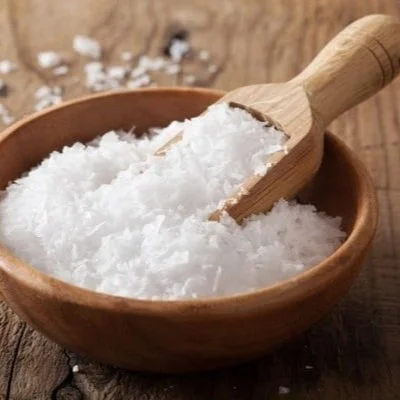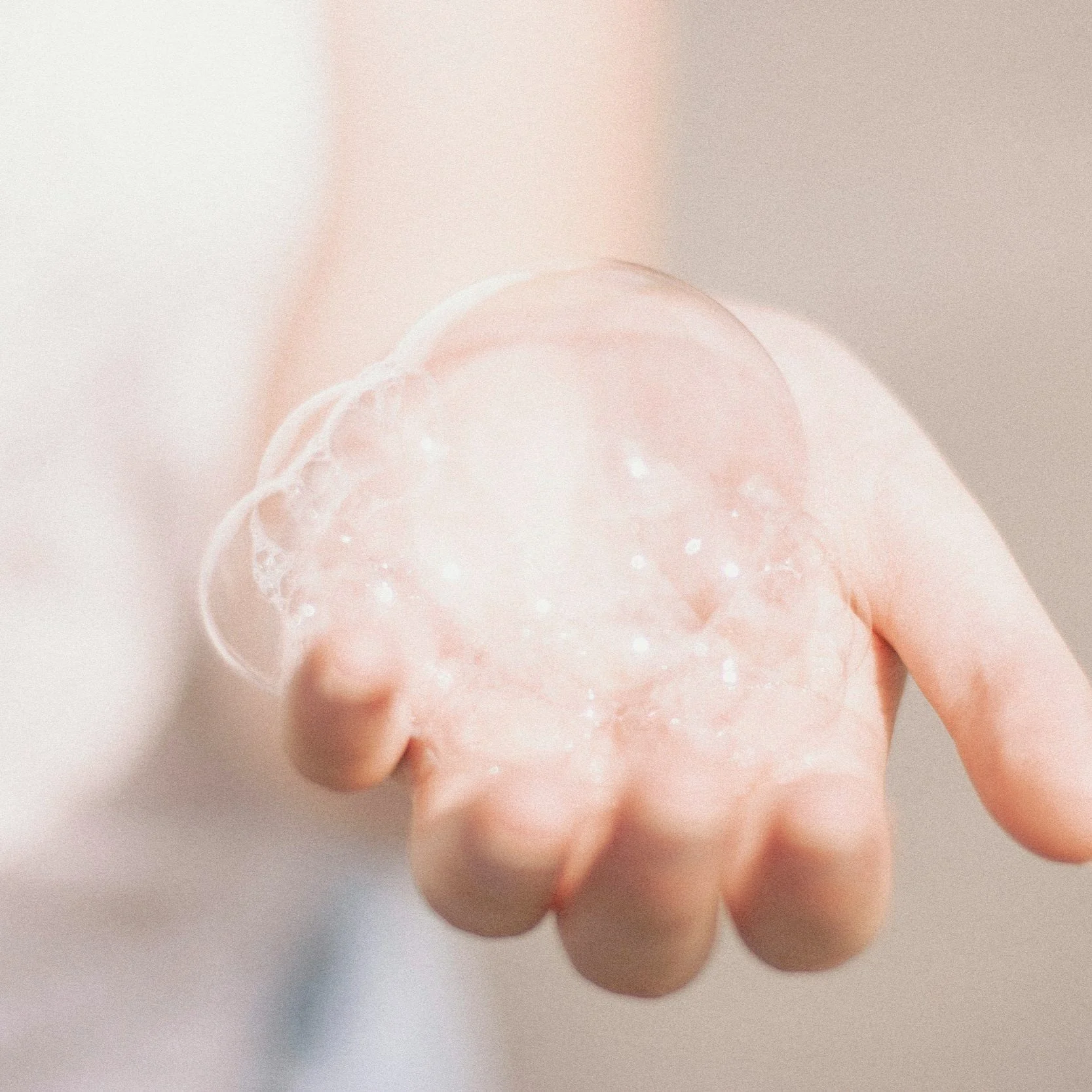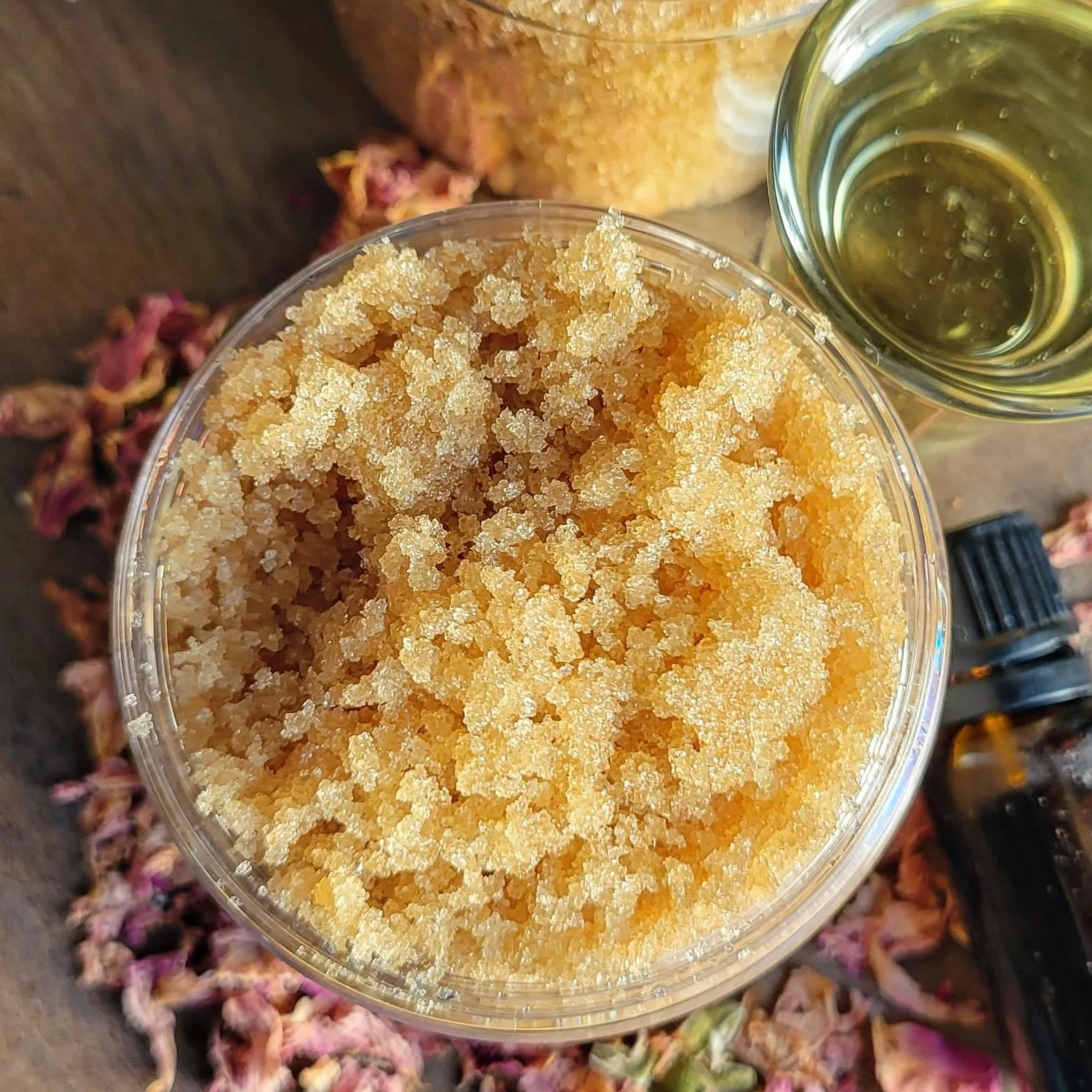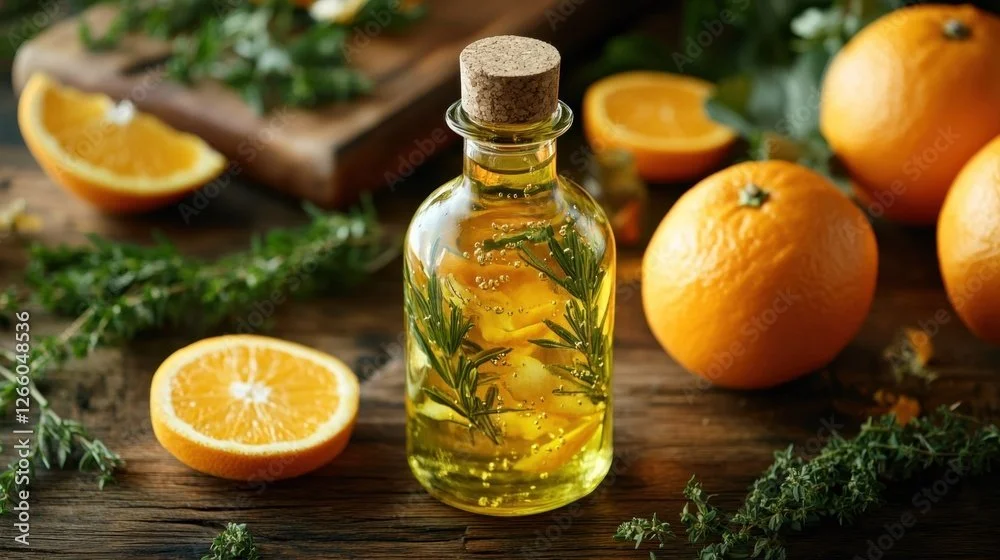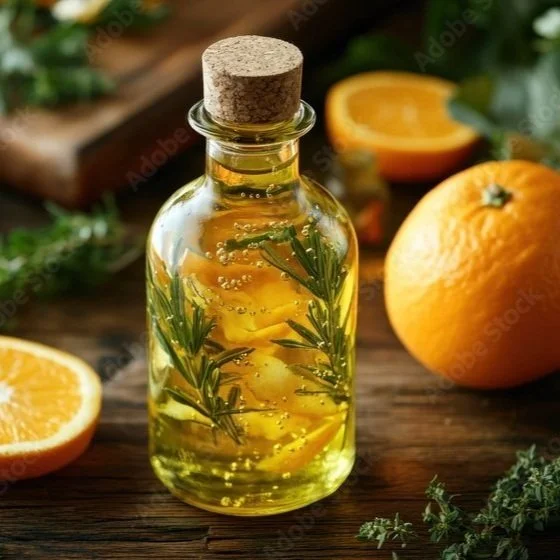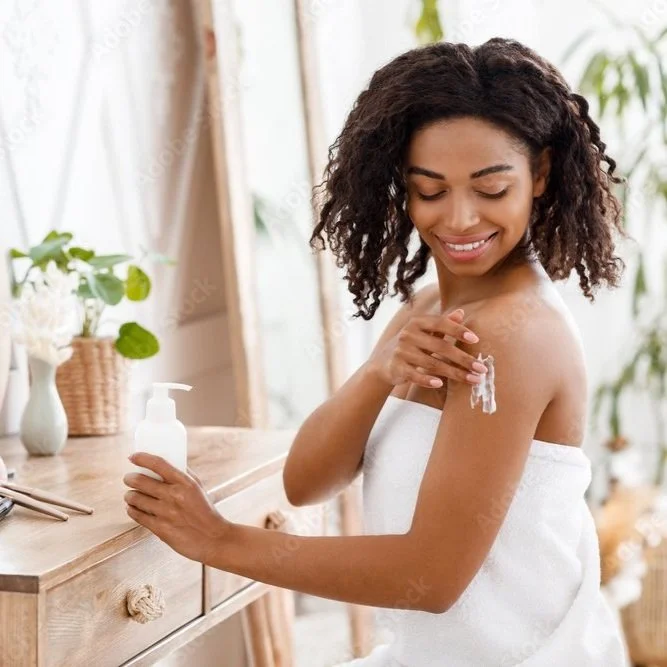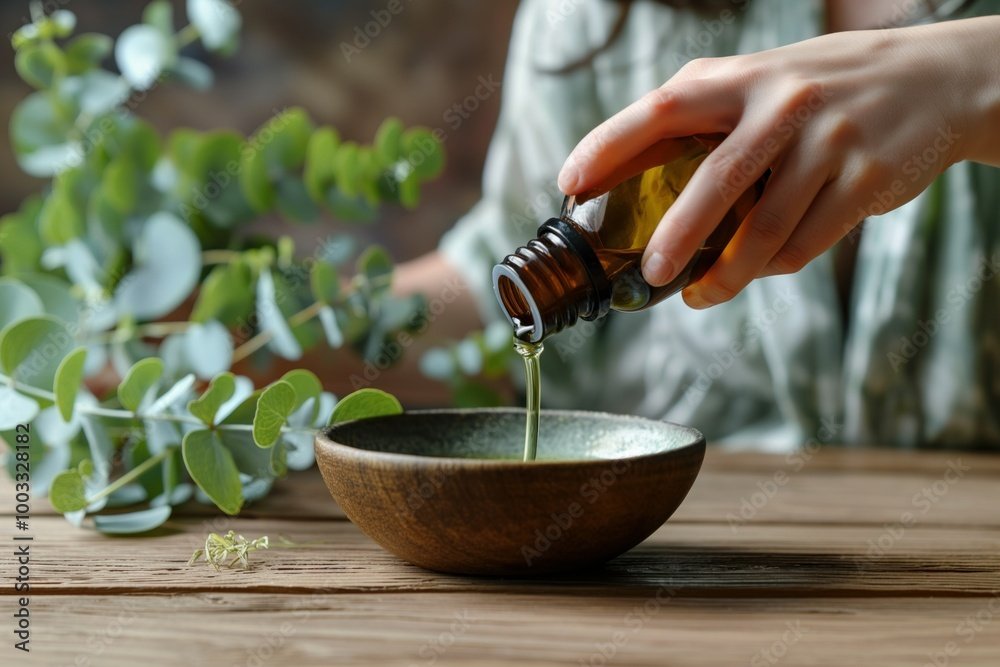The Glow Beneath the Surface: Why Our Hyaluronic Acid Serum Goes Beyond Hydration
In the world of skincare, few ingredients get as much buzz as hyaluronic acid—and for good reason. It’s one of the most effective, science-backed ways to boost hydration and improve skin texture.
That’s why our Daily DrenchHyaluronic Acid Serum isn’t just about moisture—it’s a carefully balanced blend of plant-based humectants and helichrysum hydrosol designed to support skin on multiple levels.
In the world of skincare, few ingredients get as much buzz as hyaluronic acid—and for good reason. It’s one of the most effective, science-backed ways to boost hydration and improve skin texture.
But at FLORL, we believe that deep care means going beyond the obvious. That’s why our Daily Drench Hyaluronic Acid Serum isn’t just about moisture—it’s a carefully balanced blend of plant-based humectants and helichrysum hydrosol designed to support skin on multiple levels.
💧 What Is Hyaluronic Acid, and Why Does It Matter?
Hyaluronic acid is a naturally occurring substance in your skin that acts like a sponge—holding up to 1,000 times its weight in water. When applied topically, it helps:
Deliver deep, long-lasting hydration
Smooth the appearance of fine lines
Improve skin texture and elasticity
Support a plump, dewy complexion
But here’s the secret: it works best when paired with other moisture-attracting and barrier-supporting ingredients—like hydrosols and plant-derived humectants.
🌿 What’s a Hydrosol, and Why Did We Choose Helichrysum?
Hydrosols are the gentle, water-based cousins of essential oils, created during the steam distillation of botanicals. They contain microscopic droplets of essential oil as well as water-soluble plant compounds, making them ideal for sensitive or irritated skin.
We chose Helichrysum hydrosol—also known as Immortelle—for its:
🌼 Anti-inflammatory properties to calm redness and irritation
✨ Regenerative benefits that support skin renewal and healing
🌞 Brightening effect that helps even tone and enhance radiance
Together with hyaluronic acid, Helichrysum hydrosol helps our serum do more than hydrate—it helps your skin heal, restore, and glow.
💧 What’s a Humectant, and Why Should You Care?
Humectants are ingredients that attract water to the skin—and hyaluronic acid is one of the most powerful. But at FLORL, we don’t stop there. We include plant-derived humectants that work in harmony with your skin, supporting hydration without heaviness or stickiness.
When used consistently, this combination helps improve:
Skin bounce and elasticity
Barrier strength (which means less dryness and fewer flare-ups)
Overall glow and skin tone
✨ How to Use Our Hyaluronic Acid Serum for Best Results
Maximize the benefits with a few simple steps:
Apply to damp skin – Always apply hyaluronic acid after cleansing and before your moisturizer. Dampen your face with toner or water first—this gives the serum something to bind to.
Use 1–2 drops – A little goes a long way. Press it gently into your skin rather than rubbing.
Seal it in – Follow with your favorite moisturizer or facial oil to lock in the hydration.
Use morning + night – This serum is lightweight enough to layer under SPF or night creams.
🌸 A Ritual Your Skin Will Thank You For
Skincare should feel like self-care, not a chore. That’s why every bottle of our Hyaluronic Acid + Helichrysum Serum is made with intention, simplicity, and healing in mind.
Because your skin doesn’t just need water—it needs nourishment. It needs calm. It needs care that goes beyond the surface.
Sarah Seeds, CNHP
Sarah, the owner and maker at FLORL, is a Certified Natural Health Practitioner with a passion for holistic wellness, essential oils, and natural skincare. With years of experience in health and wellness, she believes skincare should be as unique as you are. A home cook, UNOS Ambassador, and lifelong plant lover, she’s dedicated to creating products with intention—handmade, botanical, and always crafted with care.
Helichrysum and Hyaluronic Acid: Skincare’s Power Couple
When it comes to skincare, hydration is everything. But at FLORL, we believe it’s not just about how much moisture your skin holds — it’s about what’s infused in that hydration.
That’s why we created a next-level Hyaluronic Acid Serum that doesn’t just drench your skin with moisture—it nourishes, soothes, and restores with every drop. How? By swapping out ordinary distilled water for the golden botanical magic of Helichrysum hydrosol.
When it comes to skincare, hydration is everything. But at FLORL, we believe it’s not just about how much moisture your skin holds — it’s about what’s infused in that hydration.
That’s why we created a next-level Hyaluronic Acid Serum that doesn’t just drench your skin with moisture—it nourishes, soothes, and restores with every drop. How? By swapping out ordinary distilled water for the golden botanical magic of Helichrysum hydrosol.
Let’s dive into why this pairing is so powerful—and how to use it for your healthiest skin yet.
What Is Helichrysum, and Why Does It Matter for Your Skin?
Known as the “Immortelle” or “Everlasting” flower, Helichrysum has been celebrated for centuries for its extraordinary healing properties. Native to the sunny coasts of the Mediterranean, this resilient bloom is packed with skin-loving benefits:
Calms inflammation and redness
Supports natural skin regeneration
Helps fade scars and even out complexion
Boosts antioxidant protection against environmental stressors
In short, Helichrysum is a botanical powerhouse for anyone craving soothed, supple, resilient skin.
A Better Base: Why We Use Helichrysum Hydrosol Instead of Distilled Water
Most hyaluronic acid serums start with plain distilled water as a base.
Ours starts with something better.
We chose Helichrysum hydrosol—a steam-distilled floral water that captures the plant’s calming, healing essence.
This means that every drop of our Daily Drench Hyaluronic Acid Serum serum is delivering not just deep hydration but also anti-inflammatory, regenerative plant compounds straight to your skin.
When hyaluronic acid draws moisture deep into your skin, it’s pulling in nutrient-rich hydration—not just neutral water. The result?
Longer-lasting hydration
Calmer, more balanced skin
Enhanced elasticity and smoothness over time
This is hydration, elevated.
How to Use Hyaluronic Acid for Best Results: Timing, Tips + Skincare Order
Hyaluronic acid is beloved for its plumping and smoothing powers—but a few small tweaks to your routine can help you get even more from it.
Here’s how to make the most of your serum:
1. Apply to Damp (Not Dry) Skin
Hyaluronic acid is a humectant, meaning it pulls water into the skin. If there’s no moisture to pull from, it can actually leave your skin feeling more dry.
After cleansing or misting, while your skin is still slightly damp, apply your serum.
2. Lock It In
Always follow hyaluronic acid with a moisturizer to seal in that hydration and prevent evaporation. Think of your moisturizer as a lid over all that goodness. For your face, our Aluma Under Eye Silk is the perfect choice. For neck, chest, and hands, try our Whipped Body Balm.
3. Morning and Night
Use your serum twice daily:
AM: Cleanse → Tone → Hyaluronic Serum → Moisturizer
PM: Cleanse → Tone → Hyaluronic Serum → Moisturizer → Facial Oil (optional)
4. Pair with Oils for Extra Nourishment
For an overnight glow-up, layer a nourishing facial oil over your moisturizer. Hydration + lipids = skin barrier bliss.
Meet Your New Ritual
Our Hyaluronic Acid Serum with Helichrysum is more than a moisture booster—it’s a daily ritual of restoration and renewal. Lightweight, fast-absorbing, and infused with healing plant magic, it leaves your skin plump, smooth, and beautifully cared for. Because when your skin drinks deeply from nature’s best, it doesn’t just survive—it thrives. 🌿
Ready to feel the difference balanced hydration can make for your skin?
[Shop Now] ➔
Sarah Seeds, CNHP
Sarah, the owner and maker at FLORL, is a Certified Natural Health Practitioner with a passion for holistic wellness, essential oils, and natural skincare. With years of experience in health and wellness, she believes skincare should be as unique as you are. A home cook, UNOS Ambassador, and lifelong plant lover, she’s dedicated to creating products with intention—handmade, botanical, and always crafted with care.
Ingredient Spotlight: Why Calendula the Gentle Powerhouse Your Skin Needs Around the Eyes
Let’s talk about a golden little bloom that’s been quietly healing skin for centuries: calendula. 🌼
You might know it as marigold, but this sunny botanical is more than just a pretty face — it’s a skin-soothing, inflammation-calming, puffiness-fighting powerhouse. And nowhere does it shine more than in the delicate eye area.
Let’s talk about a golden little bloom that’s been quietly healing skin for centuries: calendula. 🌼
You might know it as marigold, but this sunny botanical is more than just a pretty face — it’s a skin-soothing, inflammation-calming, puffiness-fighting powerhouse. And nowhere does it shine more than in the delicate eye area.
At FLORL, we’re all about choosing ingredients with intention. That’s why calendula is one of the hero botanicals in our Aluma Under Eye Silk, a rich yet lightweight cream designed to brighten and hydrate without ever overwhelming sensitive skin.
🌿 What Makes Calendula So Special?
Calendula officinalis is a flowering plant with a long history in herbal medicine and skincare — especially beloved for its calming, antimicrobial, and reparative qualities. It’s gentle enough for even the most reactive skin and potent enough to make a noticeable difference.
✨ Calendula’s Superpowers
Calms inflammation: Puffiness? Redness? Calendula’s anti-inflammatory magic helps bring it all down.
Supports skin repair: It helps speed up healing and encourages collagen production — key for delicate skin around the eyes.
Naturally brightening: With regular use, calendula helps reduce the appearance of dark circles and dullness.
Sensitive skin approved: No stinging, no irritation — just soothing hydration that works with your skin’s natural balance.
👁️ Where Calendula Really Shines: Around the Eyes
The skin around your eyes is thinner and more delicate than anywhere else on your face — which makes it more prone to dryness, fine lines, and irritation. That’s where our Aluma Under Eye Silk (or, as we sometimes call it, "sunshine in a jar") comes in.
🌞 About Aluma Under Eye Silk
Our gentle botanical eye cream is infused with calendula oil to soothe and revitalize the eye area, while plush butters like shea and tucuma deliver long-lasting moisture with a soft, silky finish.
You’ll love it if you’re looking for:
A smoother under-eye texture
A natural solution for dark circles and puffiness
A cream that feels luxurious but never greasy
A moment of daily calm (and sunshine!) in your routine
Use it morning, night, or both — whenever your eyes need a little extra love.
🌸 Final Thoughts
Calendula is proof that gentle can be powerful. Whether it’s anchoring your full-face blend or helping you wake up bright-eyed, this golden bloom brings calm, comfort, and care to every ritual.
Sarah Seeds, CNHP
Sarah, the owner and maker at FLORL, is a Certified Natural Health Practitioner with a passion for holistic wellness, essential oils, and natural skincare. With years of experience in health and wellness, she believes skincare should be as unique as you are. A home cook, UNOS Ambassador, and lifelong plant lover, she’s dedicated to creating products with intention—handmade, botanical, and always crafted with care.
The Magic of Magnesium: Why Your Body Needs It & How Skincare Can Help
Magnesium might not get as much attention as other vitamins and minerals, but it plays a vital role in nearly every function of your body. From supporting muscle and nerve function to regulating blood sugar and helping you get a good night’s sleep, magnesium is a quiet powerhouse. Yet despite its importance, an estimated 50%–75% of Americans are deficient in this essential mineral.
Magnesium might not get as much attention as other vitamins and minerals, but it plays a vital role in nearly every function of your body. From supporting muscle and nerve function to regulating blood sugar and helping you get a good night’s sleep, magnesium is a quiet powerhouse. Yet despite its importance, an estimated 50%–75% of Americans are deficient in this essential mineral.
Why Are We So Low in Magnesium?
There are a few reasons magnesium deficiency is so common. Processed foods, poor soil quality, chronic stress, and certain medications can all contribute to lowered magnesium levels. Even if you’re eating a healthy diet, it can be tough to get enough through food alone—especially since your body doesn’t store magnesium long-term.
Why Magnesium Matters
Magnesium is a cofactor in over 300 enzymatic reactions in the body. That means it helps make things happen—from producing energy and calming your nervous system to helping your body absorb and use other nutrients like calcium, potassium, and vitamin D. Without enough magnesium, everything from your mood to your muscles can feel off balance.
Can You Absorb Magnesium Through the Skin?
Yes! Topical magnesium—often in the form of magnesium chloride or magnesium sulfate (aka Epsom salt)—can be absorbed through the skin. While transdermal absorption isn’t a total replacement for dietary magnesium, it can help fortify your levels and offer some much-needed relief from symptoms of deficiency, such as muscle cramps, restlessness, fatigue, and headaches.
Why We Add Magnesium to Our Skincare
At FLORL, we carefully infuse magnesium into our scrubs, butters, and lotions because we believe skincare should do more than sit on the surface—it should support your skin and your body from the outside in. Magnesium plays a powerful role in helping to balance the skin’s natural barrier, which is essential for keeping moisture in and environmental stressors out. It also helps improve skin hydration, calm inflammation, and support overall skin resilience.
But that’s not all—magnesium actually helps your skin absorb and utilize other vitamins and minerals more effectively, like vitamin C, E, and essential fatty acids. So when you use magnesium-enriched skincare, you’re not just getting a single benefit—you’re enhancing the effectiveness of your entire routine. It’s skincare with intention, backed by nature and rooted in whole-body wellness.
✨ For Skin Health:
Strengthens and supports the skin’s natural moisture barrier
Helps maintain optimal skin hydration
Reduces redness, flakiness, and irritation
Calms sensitive or reactive skin
Supports clearer, more balanced skin by regulating oil production
Aids in the absorption and effectiveness of other nutrients like vitamins C, E, and essential fatty acids
Encourages cell regeneration and skin repair
Protects against environmental stressors and free radical damage
Leaves skin feeling soft, nourished, and naturally healthy
🌿 For Muscle + Body Support:
Eases muscle tension and post-workout soreness
Helps relieve cramping and spasms
Soothes achy joints and promotes flexibility
Supports relaxation of the nervous system
Can reduce sensations of restlessness and fatigue
Encourages better circulation and oxygen flow to tissues
🛌 For Mind + Mood:
Promotes deep relaxation and stress relief
Supports more restful, uninterrupted sleep
Helps regulate cortisol and other stress-related hormones
Aids in mood stability and emotional balance
May reduce feelings of anxiety and overwhelm
💧 For Overall Wellness:
Enhances the absorption of key nutrients like calcium, potassium, and vitamin D
Plays a key role in energy production at the cellular level
Supports heart health and healthy blood pressure
Helps balance electrolytes and prevent dehydration
Promotes hormonal balance and overall metabolic function
How to Use It
You can use magnesium-enriched products daily, especially after a shower or bath when your pores are open and ready to soak up the good stuff. Gently massage into areas that hold tension—like the shoulders, lower back, or legs—and let nature do its thing.
Final Thoughts
Magnesium might be invisible, but its impact is powerful. Whether you’re new to the world of wellness or a seasoned self-care devotee, adding magnesium to your skincare routine is a simple, effective way to show your body a little extra love. At FLORL, we’re here to help you do just that—with intention, care, and products that work in harmony with you.
Sarah Seeds, CNHP
Sarah, the owner and maker at FLORL, is a Certified Natural Health Practitioner with a passion for holistic wellness, essential oils, and natural skincare. With years of experience in health and wellness, she believes skincare should be as unique as you are. A home cook, UNOS Ambassador, and lifelong plant lover, she’s dedicated to creating products with intention—handmade, botanical, and always crafted with care.
Jet-Set, Not Stressed: Skincare Tips for Travel
Travel can nourish the soul—but it doesn’t always do the same for your skin. Whether you're hopping on a plane, heading out on a road trip, or just packing for a weekend away, shifts in climate, stress, and disrupted routines can leave your skin feeling out of sync. But don’t worry—we’ve got you
Travel can nourish the soul—but it doesn’t always do the same for your skin. Whether you're hopping on a plane, heading out on a road trip, or just packing for a weekend away, shifts in climate, stress, and disrupted routines can leave your skin feeling out of sync. But don’t worry—we’ve got you.
At FLORL, we believe skincare should travel with you—grounded in rituals, rooted in nature, and always crafted with intention. Here are our favorite ways to care for your skin on the go, so you can feel grounded no matter where you land.
1. Simplify with purpose.
When traveling, less is more—but that doesn’t mean skipping your routine. Opt for multi-tasking products like:
A gentle cleanser that doubles as a makeup remover
A hydrating mist made from calming hydrosols like rose or cucumber
A nourishing face oil or balm that works for both day and night
✨ Pro Tip: Keep your routine focused on hydration and barrier support. Your skin is working hard—give it ingredients that soothe, not stress.
2. Stay hydrated, inside & out.
Airplane cabins, trains, even the recirculated air on a road-trip combined with travel stress can zap your skin’s moisture fast. Combat dryness with:
A water-based hydrosol mist (hello, rosewater!) to refresh throughout the day
Drinking plenty of water—infuse with lemon, cucumber, or mint for added benefits
Using an overnight balm or facial oil to lock in hydration while you sleep
✨ Carry-on MVP: A travel-sized facial mist is your best friend mid-flight.
3. Cleanse with intention.
After long travel days, cleansing becomes a grounding ritual. Use a gentle cleanser and take your time:
Massage the product into your skin with slow, circular motions
Follow up with a soft cotton cloth or warm water rinse
Mist with hydrosol before applying your moisturizer or oil
✨ Bonus: Bring a small amount of your favorite exfoliant for a mini spa moment during your trip.
4. Protect your barrier
New environments, pollution, and temperature changes can challenge your skin’s natural defenses. Protect your barrier by:
Avoiding harsh exfoliants or strong actives while traveling
Sealing in moisture with a rich balm, oil, or body butter
Applying a nourishing lip balm and hand cream regularly
✨ Remember: You don’t have to do it all—just do what feels good for your skin.
5. Make it special, wherever you are!
Skincare is self-care. Even on the go, take a few moments to:
Breathe in your favorite essential oil blend
Give yourself a quick facial massage
Wrap up your routine with a calming tea, a journal entry, or a few minutes of stillness
✨ Because taking care of your skin is one more way to take care of you.
Your skincare doesn’t have to go out the window just because your suitcase is full. With a few key products and mindful rituals, you can stay grounded, hydrated, and glowing—wherever the journey takes you.
Need help creating a travel skincare kit that fits you? FLORL’s customizable blends and spa-inspired essentials are designed to move with you, beautifully.
Stay tuned—our full collection is launching soon.
Sarah Seeds, CNHP
Sarah, the owner and maker at FLORL, is a Certified Natural Health Practitioner with a passion for holistic wellness, essential oils, and natural skincare. With years of experience in health and wellness, she believes skincare should be as unique as you are. A home cook, UNOS Ambassador, and lifelong plant lover, she’s dedicated to creating products with intention—handmade, botanical, and always crafted with care.
Why Personalized Skincare Is the Future of Beauty
In a world that constantly demands our energy and attention, prioritizing self-care is more important than ever. Taking time to nurture yourself isn’t a luxury—it’s a necessity for overall well-being. Creating a spa-like experience at home allows you to slow down, unwind, and reconnect with yourself in a meaningful way. Whether you’re looking to soothe stress, refresh your skin, or simply carve out a moment of peace, designing a self-care ritual that feels indulgent can transform your routine into something truly restorative.
In a world that constantly demands our energy and attention, prioritizing self-care is more important than ever. Taking time to nurture yourself isn’t a luxury—it’s a necessity for overall well-being. Creating a spa-like experience at home allows you to slow down, unwind, and reconnect with yourself in a meaningful way. Whether you’re looking to soothe stress, refresh your skin, or simply carve out a moment of peace, designing a self-care ritual that feels indulgent can transform your routine into something truly restorative.
In the fast-paced world we live in, self-care is essential—not just an occasional indulgence but a necessary ritual for overall well-being. You don’t need to book an expensive spa appointment to experience deep relaxation and nourishment. With the right approach, you can turn your home into a sanctuary and create a self-care ritual that feels just as luxurious as a day at the spa. Here’s how:
1. Set the Mood with Intention
Luxury spa experiences engage all the senses, and you can do the same at home. Start by creating a calming atmosphere:
Dim the lights or light candles for a soft glow.
Use an essential oil diffuser or burn incense to fill the space with a soothing scent like lavender, sandalwood, or chamomile.
Play soft music, nature sounds, or spa-inspired instrumental tunes.
Declutter your space to create a sense of tranquility and order.
2. Indulge in a Cleansing Ritual
Begin your self-care routine with a gentle cleansing ritual to wash away stress and impurities:
Use a botanical facial steam with herbs like chamomile and rose to open pores and prepare your skin.
Apply a gentle cleanser made with all-natural ingredients tailored to your skin’s needs.
Follow up with a refreshing toner to balance and hydrate your skin.
3. Luxurious Exfoliation for Radiant Skin
Exfoliation helps remove dead skin cells, revealing fresh, glowing skin. Choose a natural scrub that nourishes while exfoliating:
For body: Try a DIY scrub with brown sugar, jojoba oil, and vanilla extract for a decadent spa-like experience.
Use dry brushing before your shower to stimulate circulation and promote lymphatic drainage.
4. Deep Hydration & Nourishment
Once your skin is prepped, treat yourself to deep hydration:
Massage a luxurious body butter or oil into your skin using slow, intentional movements.
Wrap yourself in a plush robe and let the moisture soak in while sipping a warm herbal tea.
5. Soak Your Stress Away
A warm bath is the ultimate self-care indulgence. Create a spa-like soak with:
Epsom salts to relax muscles and detoxify the body.
Dried flowers or herbal bath blends for a sensory experience.
A few drops of essential oils like ylang-ylang or eucalyptus for aromatherapy benefits.
Soft towels or a heated wrap for a true spa-like embrace post-bath.
6. Elevate with a Mindfulness Practice
The best spas offer more than physical pampering—they help quiet the mind. Incorporate mindfulness and relaxation techniques to complete your ritual:
Practice deep breathing or a short meditation session.
Engage in gentle stretching or yoga to release tension.
Keep a gratitude journal to reflect on your self-care experience and set positive intentions.
7. End with a Personal Touch
Self-care should feel personal and intentional. Finish your ritual with something that brings you joy:
Apply a signature fragrance essential oil blend that makes you feel grounded.
Read a few pages of a book, listen to soothing music, or simply rest in stillness.
Hydrate with infused water or a warm golden milk latte to nourish from within.
Make It a Habit
Luxury isn’t just about expensive products—it’s about the experience and the intention behind it. Whether it’s a once-a-week ritual or a simple evening wind-down, taking time to care for yourself is an investment in your well-being. With natural, customizable skincare and thoughtful rituals, you can bring the spa experience into your daily life—effortlessly and beautifully.
Ready to elevate your self-care game? Take FLORL’s skincare quiz to help you begin to craft a ritual that’s uniquely yours! 🌿✨
Sarah Seeds, CNHP
Sarah, the owner and maker at FLORL, is a Certified Natural Health Practitioner with a passion for holistic wellness, essential oils, and natural skincare. With years of experience in health and wellness, she believes skincare should be as unique as you are. A home cook, UNOS Ambassador, and lifelong plant lover, she’s dedicated to creating products with intention—handmade, botanical, and always crafted with care.
The Perfect Scrub for Every Skin Type: Choosing the Right Exfoliant for You
Exfoliation is an essential step in any skincare routine, helping to buff away dead skin cells, boost circulation, and reveal fresh, radiant skin. But not all scrubs are created equal! At FLORL, we believe in customized skincare, which is why we offer multiple scrub options—each designed to target different skin needs.
No matter which you choose, all of our scrubs are made with all-natural moisturizers and essential oils, ensuring that your skin stays soft, nourished, and deeply hydrated after every use.
Exfoliation is an essential step in any skincare routine, helping to buff away dead skin cells, boost circulation, and reveal fresh, radiant skin. But not all scrubs are created equal! At FLORL, we believe in customized skincare, which is why we offer multiple scrub options—each designed to target different skin needs.
No matter which you choose, all of our scrubs are made with all-natural moisturizers and essential oils, ensuring that your skin stays soft, nourished, and deeply hydrated after every use.
Brown Sugar Scrubs: Gentle Yet Effective
🌿 Best for: Face, neck, chest, and other delicate areas
✨ Why? Brown sugar has finer crystals, making it our most gentle scrub—perfect for sensitive skin. Plus, if it ever feels too abrasive, just add a little water, and the sugar will begin to dissolve, softening the exfoliation. Packed with natural plant-based oils, this scrub leaves your skin hydrated, glowing, and oh-so-soft.
Salt Scrubs: Deep Detox & Renewal
🌿 Best for: Legs, arms, and back
✨ Why? Need a deep refresh? Salt scrubs detoxify, exfoliate, and boost circulation, making them a must-have for smoother, firmer skin. Our unique blend of salts provides minerals and nutrients to replenish the skin, while essential oils lock in moisture and prevent dryness—so you get all the benefits of a deep scrub without stripping your skin.
Coffee Scrubs: The Ultimate Buff & Tone
🌿 Best for: Hands, feet, and areas prone to cellulite (upper legs, booty)
✨ Why? Our most abrasive scrub, coffee is ideal for deep exfoliation on rougher areas. Plus, the caffeine in coffee helps temporarily reduce the appearance of cellulite by stimulating circulation and tightening the skin. Infused with rich, all-natural moisturizers and invigorating essential oils, this scrub will leave you feeling silky smooth and refreshed.
How to Choose the Right Scrub for You
Your skin deserves the right kind of care!
🌿 Need a gentle glow? Go for brown sugar.
🛁 Looking for a deep detox? Salt scrub is the way to go.
☕ Want to buff away rough patches and wake up your skin? Coffee scrub is your best bet.
Whichever you choose, our scrubs ensure skin-loving hydration and pure botanical benefits—because exfoliation should be nourishing, never harsh.
At FLORL, we believe skincare should be as intentional and unique as you are. Every product we create is made with pure, natural ingredients and designed to nurture, not strip your skin. Our collection of scrubs is just the beginning—soon, we’ll be launching a full line of customizable, plant-powered skincare to help you build the perfect routine. Stay tuned for our official launch and get ready to experience skincare made with care, crafted for you.
Sarah Seeds, CNHP
Sarah, the owner and maker at FLORL, is a Certified Natural Health Practitioner with a passion for holistic wellness, essential oils, and natural skincare. With years of experience in health and wellness, she believes skincare should be as unique as you are. A home cook, UNOS Ambassador, and lifelong plant lover, she’s dedicated to creating products with intention—handmade, botanical, and always crafted with care.
The Beauty of Custom Skincare: Crafted Just for You
When it comes to skincare, one-size-fits-all simply doesn’t work. Your skin is as unique as you are, with its own needs, sensitivities, and preferences. That’s why we believe your skincare should be just as personal.
At FLORL, we handcraft each product with intention, blending pure essential oils, botanical extracts, and skin-loving ingredients to create formulas that are tailored to you.
When it comes to skincare, one-size-fits-all simply doesn’t work. Your skin is as unique as you are, with its own needs, sensitivities, and preferences. That’s why we believe your skincare should be just as personal.
At FLORL, we handcraft each product with intention, blending pure essential oils, botanical extracts, and skin-loving ingredients to create formulas that are tailored to you.
More Than Just Skincare—It’s a Ritual
Skincare isn’t just about what you put on your skin—it’s about how it makes you feel. Whether you’re looking for a blend that smells incredible, one that helps you relax through aromatherapy, or something formulated to soothe common skin concerns, our products are designed to enhance your daily routine. When you take the time to care for your skin with natural, intentional ingredients, your routine transforms into a self-care ritual.
Hand-Blended, Small-Batch, and Full of Intention
As a small business, every product we make is carefully curated and blended by hand. We use only the highest quality essential oils and botanicals—never synthetic fragrances or fillers. From nourishing facial creams to indulgent bath soaks, every formula is made with purpose, ensuring that what you put on your skin is as pure as it is effective.
Your Perfect Blend, in Any Product
One of the best things about FLORL? You can customize nearly any of our products with a blend that fits your needs. Whether you crave a fresh, uplifting scent or need soothing ingredients to calm sensitive skin, your skincare should work for you, not the other way around. Let’s make something beautiful, just for you.
Ready to craft your perfect skincare blend? Take our custom skincare quiz and find your match!
Sarah Seeds, CNHP
Sarah, the owner and maker at FLORL, is a Certified Natural Health Practitioner with a passion for holistic wellness, essential oils, and natural skincare. With years of experience in health and wellness, she believes skincare should be as unique as you are. A home cook, UNOS Ambassador, and lifelong plant lover, she’s dedicated to creating products with intention—handmade, botanical, and always crafted with care.
Skincare as Self-Care: Turning Your Routine Into a Ritual
Most of us have daily skincare routines—those quick morning and evening steps we take to cleanse, hydrate, and protect our skin. But what if we slowed down, set an intention, and turned these simple acts into something more meaningful?
Skincare isn’t just about the products you use; it’s about the care, presence, and mindfulness you bring to the process. By transforming your routine into a ritual, you’re not just nourishing your skin—you’re nurturing yourself.
Most of us have daily skincare routines—those quick morning and evening steps we take to cleanse, hydrate, and protect our skin. But what if we slowed down, set an intention, and turned these simple acts into something more meaningful?
Skincare isn’t just about the products you use; it’s about the care, presence, and mindfulness you bring to the process. By transforming your routine into a ritual, you’re not just nourishing your skin—you’re nurturing yourself.
Skincare isn’t just about the products you use—it’s about the intention behind them. When you shift your mindset from simply “getting through” your routine to truly savoring each step, it becomes a moment of mindfulness in your day. Whether it’s the scent of essential oils lifting your mood, the sensation of warm water easing tension, or the ritualistic act of massaging in a luxurious moisturizer, these small moments create a deeper connection between you and your well-being. Think of it as a daily pause—a chance to check in with yourself, reset, and nourish both your skin and spirit. When approached this way, your skincare routine transforms into a self-care ritual, one that’s just as beneficial for your mind as it is for your complexion.
The Power of Ritual
Rituals have been used for centuries to bring mindfulness, calm, and intention to daily life. Unlike routines, which can feel like just another task on your to-do list, rituals create space for self-connection and purpose. When it comes to skincare, shifting your mindset can turn an ordinary process into a moment of relaxation, healing, and self-love.
Setting the Scene
Creating a skincare ritual starts with your environment. Take a few moments to set the mood—light a candle, play soft music, or take a few deep breaths before you begin. Engaging your senses helps signal to your mind that this is a time for self-care, not just another item to check off your list.
Choosing Products with Intention
Rather than rushing through your regimen, take time to select skincare that truly supports your skin’s needs. Whether it's a calming botanical cleanser, a deeply hydrating moisturizer, or a personalized essential oil blend, let your products be an extension of your self-care practice. Pay attention to the textures, scents, and how they make you feel as you apply them.
Be Present in the Process
Instead of applying products on autopilot, slow down and be present. Feel the warmth of the water on your skin, massage your moisturizer in with care, and take a moment to appreciate your reflection. Even a few extra seconds spent mindfully massaging your serums or inhaling the scent of your face mist can transform your routine into something deeply restorative.
The Mind-Skin Connection
Stress and emotions play a huge role in skin health. Taking a mindful approach to skincare can help regulate stress, promote relaxation, and even support a healthier complexion. Think of it as a small act of self-love that benefits both your inner and outer well-being.
Making It Yours
There’s no one-size-fits-all when it comes to rituals. Whether it’s a morning gratitude practice as you apply your moisturizer or an evening wind-down with a facial massage, find what feels most nourishing for you. Your skincare ritual should be something you look forward to—an act of care that leaves you feeling grounded, refreshed, and radiant.
By bringing intention and mindfulness into your skincare routine, you turn an everyday habit into a powerful ritual of self-love. Because taking care of your skin isn’t just about looking good—it’s about feeling good, too.
Sarah Seeds, CNHP
Sarah, the owner and maker at FLORL, is a Certified Natural Health Practitioner with a passion for holistic wellness, essential oils, and natural skincare. With years of experience in health and wellness, she believes skincare should be as unique as you are. A home cook, UNOS Ambassador, and lifelong plant lover, she’s dedicated to creating products with intention—handmade, botanical, and always crafted with care.
5 Essential Oils to Welcome Spring into Your Home & Skincare Routine
Spring is all about renewal—fresh air, longer days, and a much-needed reset after winter. Just like we swap out our wardrobes for lighter layers, our skincare and wellness routines could use a little seasonal refresh, too.
Essential oils are a simple yet powerful way to bring the essence of spring into your space, whether through skincare, home fragrance, or even a little DIY magic. Here are five must-have essential oils for the season and how to use them.
Spring is all about renewal—fresh air, longer days, and a much-needed reset after winter. Just like we swap out our wardrobes for lighter layers, our skincare and wellness routines could use a little seasonal refresh, too.
Essential oils are a simple yet powerful way to bring the essence of spring into your space, whether through skincare, home fragrance, or even a little DIY magic. Here are five must-have essential oils for the season and how to use them.
As the seasons shift, our senses crave new scents and fresh energy—something lighter, brighter, and full of life. Just like swapping out heavy winter moisturizers for something more hydrating, essential oils can help set the mood for the season ahead. Whether you're looking to refresh your space, revive your skin, or simply embrace the feeling of spring, these five essential oils are must-haves for the season.
🍋 Lemon – The Ultimate Spring Awakening
Nothing says "fresh start" like the crisp, clean scent of lemon. This bright citrus oil is a go-to for natural spring cleaning—add a few drops to vinegar and water for a DIY surface spray that smells amazing and cuts through grime. In skincare, lemon oil is packed with antioxidants that help brighten dull winter skin (just be sure to use it at night or follow with SPF since citrus oils can make skin more sun-sensitive!). Want to bring a touch of spring to your drinks? Add a drop of food-grade lemon essential oil to honey and mix it into iced tea.
🌿 Lavender – The Soothing Reset
Spring can be full of energy, but it’s also a time to reset and recharge. Lavender is perfect for that transition—it soothes the mind, calms irritated skin, and even makes a dreamy addition to beverages. Try adding a drop of food-grade lavender essential oil to lemonade for a floral twist on a classic. In skincare, lavender is a hero for sensitive or stressed-out skin, helping to calm redness and irritation while promoting balance.
🍃 Peppermint – A Breath of Fresh Air
Spring allergies got you down? Peppermint is a natural decongestant that helps clear sinuses and refresh the senses. Diffuse it with eucalyptus for a crisp, invigorating blend that feels like opening the windows on a breezy spring morning. On the skincare side, peppermint’s cooling properties make it a great addition to foot soaks or DIY body mists to refresh and revive tired skin.
🌸 Geranium – Floral, Fresh, and Balancing
Spring is flower season, and geranium essential oil brings a naturally sweet, rosy aroma that’s perfect for the season. It’s a powerhouse in skincare, helping to balance oil production, improve skin elasticity, and promote a dewy glow (without saying glow 😉). Add a few drops to your body lotion for a fresh springtime scent, or mix it into a DIY facial steam for a spa-like experience.
🌲 Cedarwood – The Unexpected Grounding Scent
While spring is full of light and freshness, sometimes we need a little grounding energy, too. Cedarwood is warm, woody, and perfect for balancing out the brightness of other spring scents. It’s also a skin savior, helping to calm breakouts and support a healthy skin barrier. Try blending it with lavender in a nighttime diffuser blend or adding a drop to your moisturizer for extra skin-supporting benefits.
Whether you’re refreshing your space, upgrading your skincare, or adding a seasonal twist to your routine, essential oils are an easy way to bring the magic of spring into your everyday life. Which scent will you be reaching for first?
Sarah Seeds, CNHP
Sarah, the owner and maker at FLORL, is a Certified Natural Health Practitioner with a passion for holistic wellness, essential oils, and natural skincare. With years of experience in health and wellness, she believes skincare should be as unique as you are. A home cook, UNOS Ambassador, and lifelong plant lover, she’s dedicated to creating products with intention—handmade, botanical, and always crafted with care.
Hydration vs. Moisture: What Your Skin Really Needs
When your skin isn’t behaving the way you want it to—whether it feels tight, flaky, or unexpectedly oily—it’s often a sign that something is out of balance. The key to restoring harmony? Knowing whether your skin is thirsty for hydration or craving moisture. While one focuses on replenishing water, the other helps lock it in, and using the wrong type of product can sometimes make things worse. A lightweight gel may quench dehydration but leave dry skin feeling parched, while a rich cream can soften dryness but feel heavy if hydration is what’s lacking. Finding the right balance is essential for a skincare routine that truly works for your skin.
Ever feel like skincare lingo is just a bunch of fancy words thrown around? (Yeah, we do, too!)
One of the most common mix-ups is the difference between hydration and moisture. While they might sound interchangeable, these two elements play distinct roles in keeping your skin happy and healthy. Understanding what your skin actually needs can be the key to achieving that balanced, dewy glow.
When your skin isn’t behaving the way you want it to—whether it feels tight, flaky, or unexpectedly oily—it’s often a sign that something is out of balance. The key to restoring harmony? Knowing whether your skin is thirsty for hydration or craving moisture. While one focuses on replenishing water, the other helps lock it in, and using the wrong type of product can sometimes make things worse. A lightweight gel may quench dehydration but leave dry skin feeling parched, while a rich cream can soften dryness but feel heavy if hydration is what’s lacking. Finding the right balance is essential for a skincare routine that truly works for your skin.
Understanding Hydration vs. Moisture
While the terms "hydration" and "moisture" are often used interchangeably in skincare, they refer to different aspects of skin health. Grasping these differences is essential for selecting the right products and achieving a balanced complexion.
Hydration: Infusing Water into the Skin
Hydration pertains to the water content within the skin cells. Well-hydrated skin appears plump, elastic, and radiant. Dehydrated skin, on the other hand, can look dull, feel tight, and may accentuate fine lines. Hydrating products typically contain humectants—ingredients that draw water into the skin. Common humectants include hyaluronic acid, glycerin, and aloe vera. These ingredients attract moisture from the environment and deeper skin layers, ensuring skin remains supple and luminous.
Moisture: Sealing in Hydration with Oils
Moisture relates to the skin's oil content and its ability to retain hydration. The skin's natural lipid barrier prevents water loss, maintaining softness and flexibility. When this barrier is compromised, skin can become dry, rough, or flaky. Moisturizing products are designed to reinforce this barrier. They often contain emollients and occlusives—such as shea butter, oils, and silicones—that form a protective layer on the skin's surface, locking in hydration and preventing moisture loss.
Identifying Your Skin's Needs
Determining whether your skin requires hydration, moisture, or both is crucial:
Dehydrated Skin: Lacks water. Indicators include a dull complexion, fine lines, and a feeling of tightness. Even oily skin can be dehydrated. Incorporate hydrating serums with humectants to replenish water content.
Dry Skin: Lacks oil. Symptoms encompass roughness, flakiness, and irritation. Emphasize moisturizing creams rich in emollients and occlusives to restore the lipid barrier.
It's worth noting that skin can be both dry and dehydrated, necessitating a combination of hydrating and moisturizing products.
Crafting a Balanced Skincare Routine
To ensure your skin receives both hydration and moisture:
Cleanse Gently: Use a mild cleanser that doesn't strip natural oils.
Hydrate: Apply a hydrating toner or serum containing humectants to draw water into the skin.
Moisturize: Follow up with a moisturizer suited to your skin type to seal in hydration and reinforce the skin barrier.
Protect: During the day, apply sunscreen to shield your skin from environmental damage.
By understanding and addressing the distinct needs of your skin concerning hydration and moisture, you can achieve a healthier, more radiant complexion.
Take our skincare quiz to find the right blend and products just for you!
Sarah Seeds, CNHP
Sarah, the owner and maker at FLORL, is a Certified Natural Health Practitioner with a passion for holistic wellness, essential oils, and natural skincare. With years of experience in health and wellness, she believes skincare should be as unique as you are. A home cook, UNOS Ambassador, and lifelong plant lover, she’s dedicated to creating products with intention—handmade, botanical, and always crafted with care.
The Art of Custom Skincare: Why One-Size-Fits-All Doesn’t Work
When it comes to skincare, we’ve been told for years that there’s a “holy grail” product for every skin concern—a single serum, cream, or cleanser that magically works for everyone.
But here’s the truth: skincare isn’t one-size-fits-all. Your skin is as unique as your fingerprint, and it deserves a routine that’s tailored to your specific needs. That’s where custom skincare comes in.
When it comes to skincare, we’ve been told for years that there’s a “holy grail” product for every skin concern—a single serum, cream, or cleanser that magically works for everyone.
But here’s the truth: skincare isn’t one-size-fits-all. Your skin is as unique as your fingerprint, and it deserves a routine that’s tailored to your specific needs. That’s where custom skincare comes in.
Over 16 million Americans are now vegetarian with nearly 10 million of those choosing a vegan lifestyle. It’s easier than it has ever been to enjoy great food while also cutting back, or avoiding meat altogether. With movements like Meatless Mondays and Meat-Free Fridays on the rise, research shows that, even those who have not totally adopted a plant-based lifestyle are choosing to cut back on the animal products they are ingesting. Whether you’re looking to add more vegetables into your diet for health reasons or ethical ones even the best intentions can be hard to stick to without a plan! So, If you’re looking to Veg Out in the New Year here are the top 6 ways to get more green into your diet!
Why Generic Skincare Falls Short
Mass-produced skincare products are formulated for the “average” consumer—but who is that, exactly? If you’ve ever tried a moisturizer that left your skin feeling greasy or a cleanser that stripped away too much moisture, you know the frustration of products that don’t quite fit. Skin type, environment, lifestyle, and personal preferences all play a role in what works best for you.
The Magic of Custom Blends
Custom skincare allows you to create a blend that works with your skin, not against it. Whether you’re drawn to a certain scent or looking for targeted support—like calming botanicals for sensitive skin or clarifying oils for breakouts—you get to design a product that feels good, smells good, and actually works for you. It’s not just skincare; it’s self-care, crafted with intention.
The FLORL Approach
When it comes to skincare, nature provides some of the most powerful ingredients—and few are as versatile as essential oils. Essential oils are highly concentrated plant extracts that capture the natural aromatic compounds and therapeutic benefits of botanicals. Used for centuries in holistic wellness, these potent oils offer a range of skincare benefits, from soothing inflammation to balancing oil production and promoting skin regeneration. At FLORL, we harness the power of essential oils not just for their beautiful scents, but for their ability to nourish and support healthy skin—ensuring that every custom blend is as beneficial as it is luxurious.
At FLORL, we believe in skincare that’s as unique as you are. With our custom blends, you can choose ingredients that align with your skin’s needs and personal preferences. Looking for a lightweight moisturizer with a soft lavender finish? Or a deeply hydrating cream infused with rich vanilla and sandalwood? The choice is yours.
Your skin isn’t generic—why should your skincare be?
Take our skincare quiz to find the right blend for you!
Skincare should be as unique as you are, and with FLORL’s custom approach, you’re in control of what goes on your skin. By blending high-quality botanicals, nourishing oils, and the power of essential oils, we create products that aren’t just skincare—they’re self-care, made with intention. Whether you're drawn to a scent that lifts your mood or seeking targeted ingredients for your skin’s needs, FLORL is here to craft the perfect blend for you. Because when skincare is personal, the results are extraordinary.
Sarah Seeds, CNHP
Sarah, the owner and maker at FLORL, is a Certified Natural Health Practitioner with a passion for holistic wellness, essential oils, and natural skincare. With years of experience in health and wellness, she believes skincare should be as unique as you are. A home cook, UNOS Ambassador, and lifelong plant lover, she’s dedicated to creating products with intention—handmade, botanical, and always crafted with care.
Vegging Out: 6 Ways to Eat More Green and Clean in the New Year!
With movements like Meatless Mondays and Meat Free Fridays on the rise, research shows that, even those who have not totally adopted a plant-based lifestyle are choosing to cut back on the animal products they are ingesting. Whether you’re looking to add more vegetables into your diet for health reasons or ethical ones even the best intentions can be hard to stick to without a plan! So, If you’re looking to Veg Out in the New Year here are the top 5 ways to get more green into your diet!
January is coming…and with it come the countless, unrealistic, resolutions that most of us will have given up on by Valentines Day! Everyone loves the idea of starting off the New Year with renewed perspectives and personal goals but sticking to them long term is another story!
Over 16 million Americans are now vegetarian with nearly 10 million of those choosing a vegan lifestyle. It’s easier than it has ever been to enjoy great food while also cutting back, or avoiding meat altogether. With movements like Meatless Mondays and Meat-Free Fridays on the rise, research shows that, even those who have not totally adopted a plant-based lifestyle are choosing to cut back on the animal products they are ingesting. Whether you’re looking to add more vegetables into your diet for health reasons or ethical ones even the best intentions can be hard to stick to without a plan! So, If you’re looking to Veg Out in the New Year here are the top 6 ways to get more green into your diet!
Load up on the toppings!
One of my favorite ways to serve a crowd, particularly a crowd that isn’t really plant-based is to choose meals where there are a ton of options for toppings, like gyros, tacos, or baked potatoes. Loading up on a variety of interesting and flavorful toppings means that your brain is less likely to miss the meat that it might be accustomed to.
Try substituting sauteed mushrooms with garlic in your gyros and top with homemade tzatziki sauce, lettuce, red onion, avocado. black olives, tomatoes, cucumbers, and a dairy free feta!
Taco night is just as good with jackfruit as a substitute for birra and you can season it with all the same herbs and spices you love…topped with black beans, corn, onions, tomatoes, peppers, dairy free cheese and sour cream or hot-sauce!
Baked Potatoes or Jacket Potatoes are delicious with a simple vegan chili, onions, cheese, and yes, even some bacon bits! Did you know that the “Bacon Bits” you keep in your pantry are most likely actually vegan?
Chickpeas!
Beans in general are a great way to load up on flavor and texture when you are looking to cut back on the meat, but chickpeas in particular, have a mild enough flavor and texture that is perfect for “hiding” them in other dishes! One of my favorite ways to use chickpeas is in my meatloaf. Whether you are making a vegan loaf using a “moc meat” product like Impossible or Beyond or are just looking to supplement a traditional meatloaf chickpeas are a great option and honestly don’t check the texture of the final loaf in the slightest! This also happens to be a great tip to help feed a larger crowd on a smaller budget because chickpeas are very inexpensive and can double the volume of the meatloaf you are preparing for only about $1.00 more!
In a large bowl, gently mash your rinsed and drained chickpeas until they become the texture similar to that of uncooked ground beef. pick out and remove the skins of the chickpeas as you mash them. Simply incorporate into the base of your meatloaf recipe and prepare as normal.
Substitute Dairy Milk for Plant Milk!
It’s 2021 and the plant-milk game is stronger than ever! Long gone are the days when you had to choose between soy milk or rice milk if you were looking to avoid dairy! Most of the major dairy brands are now offering plant-milks that range from Oat, Cashew, Almond, Flax, even Pea and Banana Milks are in the mix now! Switching to a plant-based milk is one of the easiest ways to cut back on animal products at home, especially when using it in baked goods, soups, and sauces, where the plant-milk-based alternatives are nearly indistinguishable from traditional dairy.
Two of my favorite plant-milks are the Oat Milks from Rise Brewing…for baking, I especially love the vanilla and the plant-milk from Good Karma Foods, which might be one of the creamiest plant-milks that I have tried!
Make your own Soups, Sauces and Dressings.
A huge part of eating more clean and getting more green into your diet starts with cooking more at home! And…when I say cooking, I mean cooking! Making things from scratch instead of reaching for a can or jar allows you to control what goes into the dish…and can help you “sneak in” more produce than you might otherwise!
My own homemade pasta sauce for example, along with tomatoes, also includes peppers, onions, celery, and even carrots…but once it’s all stewed down in blended smooth no one would know!
Try making your own cream of potato soup…you’d be surprised what you can sneak in without much effort at all: onions, cauliflower, and parsnips just to name a few and that’s just in the cream sauce!
Salad dressings are another great way to utilize fresh herbs in ways that you might not think to do otherwise! One of my favorite summer salads is made with crisp, cold, green beans and a dressing that includes garlic and basil!
Cook with more Fresh Herbs and Spices.
Speaking of using more herbs and spices…this may be the last on the list but it’s honestly the best (and probably the easiest!) Rather than making a resolution to eat more of this and less of that in 2022 why not start an herb garden? Cooking with fresh herbs and spices is not only a sure-fire way to step up the flavor profiles of literally all your meals but growing them yourself will help motivate you to want to cook more and save you loads of money in the long run! Plus fresh herbs and spices have loads of health benefits over their dried counterparts!
Plan a Visit to your Local Ethnic Market!
Most national chain grocery stores carry all the same produce because they know who their audience is and what they routinely buy! One of my favorite things to do, when I’m in a food rut, is to visit a market in a neighborhood that caters to ethnicities and cooking styles that differ from my own or how I was raised! I know it may seem strange at first, and you’re going to need to fight the urge to feel self-conscience or out of place…but I promise that, honestly, no one cares. People are living their lives and doing their own shopping. No one cares or is even going to likely notice that you look a little lost.
Give yourself some time and just wander around the produce section. Choose one of two things that you have no idea how to prepare and buy them! That’s right…buy them! It’s almost 2022…we have siri, google, youtube, IG tiktock and about 100 other options for you to look up and learn how to make something new! Trust me on this…pick out something new, buy it, look it up on YouTube and get to cooking!
So, there you have it! The top 6 ways to get more green into your diet in 2022! For more plant-based food inspiration make sure to hop on over and join our community on Instagram HERE!
Sarah Seeds, CNHP
Sarah, the owner and maker at FLORL, is a Certified Natural Health Practitioner with a passion for holistic wellness, essential oils, and natural skincare. With years of experience in health and wellness, she believes skincare should be as unique as you are. A home cook, UNOS Ambassador, and lifelong plant lover, she’s dedicated to creating products with intention—handmade, botanical, and always crafted with care.
Your Body Needs Protein Not Meat: 5 Ways Plant-Based People Get Their Protein and How You Can, Too!
The myth that people who eat plant-based diets aren’t getting enough protein is one that simply won’t go away, no matter how many times science has proven it false but these 5 Ways Plant-Based People Get Their Protein are more than capable of providing enough for the average person. After all, the animals that we kill and eat to get our protein…ironically, get all of their protein from…you guessed it, plants!
Been to a restaurant lately? Ordered a salad? Want to add a “protein”…? Along with fats and carbohydrates, protein is one of the macro-nutrients we need to live, but trust me, your server isn’t asking you if you want some extra avocado or black beans on that salad!
The myth that people who eat plant-based diets aren’t getting enough protein is one that simply won’t go away, no matter how many times science has proven it false! Somehow, there remains the narrative that vegetarians and vegans are weak, sickly, and generally unhealthy because of the lack of animal protein in their diets.
Ironically, the top-two, of ten, killers of Americans, according to the CDC, are still heart disease and cancer, both largely shown to be linked to the over-consumption of processed meat. Want to know what isn’t on that list? Protein deficiency from lack of animal-based-eating.
Traditionally, meat has long been thought of as the Westerners’ main source of protein, so much so that the words “meat” and “protein” have almost become interchangeable! We can thank the industrial meat industry and the beef ads from the 70s and 80s that we all grew up with…or the outdated food pyramids printed in our 3rd grade textbooks…or even the athletic-celebrity, endorsements of burgers, chicken, and pork…but the truth is that there are plenty of other diverse protein sources out there…and spoiler alert: they all come from plants!
Contrary to what your Uncle Fred says at Thanksgiving dinner, or the YouTube video he claims proves otherwise, there are plenty of ways for people eating a plant-based diet to get enough protein! So, here are my top 5 Ways Plant-Based People Get Their Protein and How You Can, Too!
#1: Tofu, Tempeh, and Edamame
Soy based products are some of the best sources of plant-based proteins, not to mention the diversity of dishes that can be created with these ingredients, make them an obvious choice for many plant-based diets! They are also praised for diminishing hot flashes, warding off osteoporosis, and protecting against disease.
And, yes…I know what you’re thinking. “What about the hormone issue? I heard that soy products are bad for your hormones…”
Ironically, I hear this argument most often from people who, still, also consume copious amounts of dairy and eggs, which let’s face it, both are literally chocked full of the fertility hormones from another entire species of animal…so, if you ask me if I’m worried about moderate amounts of soy in my diet and my hormones, the answer is, no…not really!
#2: Beans and Legumes
It’s no secret that beans are a great source of protein, along with being a fantastic way to help maintain GI health they have also been shown to help lower cholesterol.
Beans are an easy way to not only get healthy protein but also much needed vitamins and minerals, which lets face it, most Westerner’s are significantly more deficient in than protein. Eat them in soup, toss them in salads…you can even grind the dry beans up and use them in place of some flours to make pasta!
Did you know that 1 cup of lentils has nearly 18g of protein, almost no fat and is loaded with both iron and b-vitamins? 1 cup of kidney beans and black beans, both, have over 15g of protein plus black beans are a great source of calcium and magnesium. Black beans, in particular, actually contain more than twice the amount of magnesium, per 8 ounces, than cows milk does.
#3: Quinoa
Oh, Quinoa! (pronounced Keen-Wa, for the less hippie-dippy crowd) Quinoa has really come into it’s hay-day in the last several years, making appearances on major restaurant chain menus like BurgerFi, Einstein Bros Bagels, Panera Bread, and Chili’s!
This humble little grain, is an amazing source of protein as well as being what is called a “complete protein” - meaning that it contains all nine essential amino acids that our bodies do not make on their own.According to the Whole Grains Council, quinoa is a gluten-free, whole-grain carbohydrate, as well, so it’s safe for both people with celiac disease and diabetes. Because of this, it makes a great substitute for rice in soups, stews, burritos, and wraps plus, like beans, the uncooked grain can be milled down into flour and easily adapted to a broad range of baking recipes!
#4: Leafy Greens
Ounce for ounce, spinach is packed with more protein and iron than beef, chicken, or pork at rate of more than twelve-to-one! 8 ounces of a steak has only about 8% of the protein that 8oz of spinach (by weight) contains. I’m not kidding…do the math!
Now, having said that, is anyone going to realistically going to eat 8oz of spinach, by weight, in one serving? No! But, the good news is that you don’t need to. It is commonly recommended that adults should consume somewhere between 50 and 60 grams of protein every day! (Ironically, about one portion of meat…more on that later!)
Leafy greens, cooked down and added to stews, gravies, and sauces, lose significant volume but retain their protein benefits! That’s why I love recipes like THIS ONE so much because it allows you to consume far more greens than you would by simply eating a salad!
#5: Nuts and Seeds
Some of the nuts and seeds with the highest protein counts may surprise you! They include hemp seeds, pumpkin seeds, peanuts, almonds, pistachios, sunflower seeds, chia seeds and flax seeds!
Chia seeds, in particular, are an easy and delicious way to pack extra protein into your plant-based diet, even being used, by many, as an egg-replacement in vegan and plant-based baking!
Rich in vitamins E, B6, niacin and folate; and they provide minerals such as magnesium, zinc, plant iron, calcium, copper, selenium, phosphorus and potassium, many nut and seed butters are another great way to sneak in extra protein, but be careful, because they can also pack a fatty-punch per serving!
Back on #4, when we were talking about leafy greens, I said that the recommended protein intake for an adult was somewhere between 50-60 grams, per day! I also mentioned that this was just about equal to one portion of steak, chicken, or pork…but I want to be clear, that’s an 8 ounce portion. Despite how this article may seem, my intention is not to shame anyone into eating less meat, but I do think it’s a valuable exercise to really look at how much animal-based protein that many Americans eat in a day, specifically when the counter argument for a plant-based diet, is so often that vegetarians and vegans “won’t get enough.”
Think about this!
If you stop for a breakfast sandwich at your local fast-food joint on the way to work, gobble down your favorite chicken sandwich and fries for lunch, and come home to a steak dinner…in reality you are likely consuming double the protein that you need in a day. And, this is not a over-dramatic scenario…as I think we all know many people who can easily eat two of these kinds of sandwiches as their “lunch” portion, not to mention the the marketing campaigns of many fast-food restaurants boasting an entire 1/2 pound, or more, of meat layered onto their sandwiches.
Simply put, not only are humans really, really bad at guessing at portion size, we also need significantly less protein than most of us are routinely consuming. With these two facts in mind it’s actually quite simple to see how these 5 Ways Plant-Based People Get Their Protein are more than capable of providing enough for the average person…
After all, the animals that we kill and eat to get our protein…ironically, get all of their protein, from plants!
Sarah Seeds, CNHP and UNOS Ambassador
Sarah, aka: The Plant Based Ginger, has been in the plant-based community for 20 years and has worked in natural skincare as well as the health and wellness sector. Over the years her love of holistic wellness, essential oils, and plant-based cooking has merged to create the PBG website and social brand. Sarah is currently living back in Central Florida, where she was raised, after spending over a decade up in Ohio’s Amish Country! She is a Certified Natural Health Practitioner, UNOS Ambassador, Homecook, Coffee Lover, and Fur Mom!
Teach Them to Cook: 7 Things That Young Adults Need to Know How to Cook Before Living on Their Own!
In a world that is increasingly more and more physically disconnected, teaching your kids the skills to cook good food, for the people they love, will ensure that you not only keep their bellies full and fed but their hearts as well. One of the best things that the older adults in these young peoples’ lives can do is make sure they have some legitimate skills in the kitchen before they leave your family home. So, here are the top Seven Things That Young Adults Need to Know How to Cook Before Living on Their Own!
“I was 32 when I started cooking; up until then, I just ate.” - Julia Child
In a world that is increasingly more and more physically disconnected, teaching your kids the skills to cook good food, for the people they love, will ensure that you not only keep their bellies full and fed but their hearts as well.
Oh, the life we all lead in our early 20’s. Everything is a new adventure and at that age, leaving your parent’s house to live on your own might just be the biggest adventure of them all. Officially adults, but don’t be fooled, most kids from 18-22 are very much still shedding their childhoods, as they work to become the people they are destined to be. And while the sterotype of cold pizza and microwave ramen might not be too far off for a lot of 20-somethings, one of the best things that the older adults in these young peoples’ lives can do is make sure they have some legitimate skills in the kitchen before they leave your family home. So, here are the top Seven Things That Young Adults Need to Know How to Cook Before Living on Their Own!
#1: How to Cook and Dress Pasta
You knew that this one was going to make it onto the list! Pasta is probably the quickest and easiest thing to make. Whether you are going to use it as a base for a killer gourmet mac n cheese or slather it in jarred pasta sauce and eat it from a bowl on the couch, learning to cook pasta is a necessity.
Although not overly complicated, learning to make pasta allows your kids to confidently master some basics of cooking: How to choose the right sized pot, how to boil water, how to not let your pot boil over (and bonus: if it does, it’s not a huge, remarkable, mess to clean up!) Don’t forget to teach them the tricks: Always salt your pasta water…bring the water to a boil and then drop your pasta, stir the pasta so that it doesn’t stick together or stick to the bottom of the pot, how to drain without ending up with a clumpy mess, and the benefits of a small pat of butter melted into hot noodles!
As for teaching them the correct single portion of pasta to cook…don’t worry about it, no one really knows how to do that.
#2: How to Saute and Roast Vegetables
I know, I know…this seems like this should be two things but just trust me! In teaching your kids how to saute vs. roast you’re introducing them to the two main ways of cooking, stove-top vs. oven. Take this opportunity to use the same vegetables in both cases (say, mushrooms, onions, broccoli, squash, peppers, and potatoes) and they will also learn how different cooking methods will result in different tastes and textures.
Roasting vegetables, will allow them to learn to clean and prep the vegetables, acquire some basic knife skills, season their produce, perhaps learn about marinades or the benefits of basting, learn the difference between a roasting pan vs. a cookie sheet, see what the broil feature of an oven can be used for and, in the end, have something delicious (that they might even toss on top of that pasta they just made…Did someone say Roasted Broccoli with Alfredo Sauce?!)
Additionally, when they learn to saute not only will they get some killer fajitas out of the deal, they learn about skillets vs saucepans or stockpots, choosing oil vs. butter, what a smoke point is, how to gauge and adjust cooking temperate, order of addition (ie: how different vegetables cook quicker or more slowly than others and when to add them) and how to safely handle a hot pan on the cook-top. Plus, sauteed veggies are the base for all kinds of soups and stews! More on that, later!
#3: Assemble and Bake a Casserole
Oh, the humble casserole, the culinary mid-point between cooking and baking! It really doesn’t even matter what kind of casserole you teach them to conquer! Does your family have a favorite recipe? Does your kid have a favorite vegetable? Baking a casserole allows them to take ingredients that are relatively inexpensive and create a dish that is far, far greater than the sum of it’s parts. Once mastered, and with a little kitchen confidence, they will be able to substitute ingredients to make all kinds of combinations!
Casseroles are great for young people in their early 20’s because it gives them something (other than potato salad from a plastic tub) to take to a community picnic or work potluck. When they learn to make a casserole they learn how to pre-heat an oven, the basic measuring of ingredients, both wet and dry, how to choose the right size baking dish, and how to tell when something is “set.” Plus, it’s probably a sure fire way to impress the mom of whomever they are currently dating.#4: Make Scrambled Eggs
Weather they are going to eat them on toast with an avocado…pile them onto an english muffin or bagel for a breakfast sandwich, top them with the sauteed veggies that they learned how to cook in lesson #2 or just eat them plain, scrambled eggs are one of the most versatile of breakfast foods!
Scrambled eggs, plant-based or otherwise, are something that everyone needs to know how to prepare, because really...what’s better than breakfast? Similar to pasta, scrambled eggs seem pretty simple, but everyone makes them just a little bit different: Cooking spray or butter? Do you salt and pepper your eggs before you scramble them, or before you serve them? Add milk, or no milk? What about cheese? When do you add the cheese? How much do you stir? And, for the love of all that is holy, how do you clean 2-day-old eggs out of your only frying pan?
#5: Brew a Pot of Coffee
Speaking of breakfast, let’s talk coffee!
Maybe the young adult in your life just landed the internship at their dream job and now…coffee duty is on them, or they are volunteering at a local community or charity event, or perhaps they are just cramming with their room-mates for finals, no matter the reason and regardless whether they drink it or not, everyone needs to know how to brew a good, strong, pot of coffee!
#6: Nail a Grilled Cheese Sandwich
This one might be my favorite on the list and not just because, personally, I’m a huge grilled cheese geek! I know what you’re thinking…come on, grilled cheese, really?
Yes. Really!
Choosing the correct pan, maintaining skillet temperature, type of bread, variety of cheeses and how they melt, the melt point vs. the burn point, and even how and when you choose to flip…the perfect grilled cheese is something no one ever regrets knowing how to make and just like the sauteing of vegetables the skills your kids will learn will allow them to make all kinds of griddled sandwiches including melts, paninis and even quesadillas!#7: Make a Pot of Chili
Okay, gang… we made it to #7! This last one might seem a bit strange but just hang with me for a couple more paragraphs and it will all become clear. If your young adult has made it through 1-6 they have nearly all the kitchen skills they will need to make a really delicious pot of Chili.
They know how to: prep, chop, and saute vegetables, choose the correct sized pot for the job, measure wet ingredients, (stock, tomato paste, etc…) measure their spices, (dry ingredients) taste for seasoning, monitor and safely handle a hot pot on the stove-top without it boiling over and (depending on the casserole you taught them to make earlier, they may even know how to fry up ground-beef or a plant-based alternative.) If not, that’s the last step (if you want your chili to have meat…) The best part about Chili is, beyond that, it really is a waiting game more than anything, which also helps to teach patience in the kitchen and will allow them to see how flavors deepen and get better over time.
A pot of chili easily feeds a crowd and is the perfect way for your kids to showcase their new culinary skills for their friends on a Saturday afternoon! Chili-dogs, anyone? Leftovers can keep, in the fridge, and be eaten all week long and it’s a frugal meal that most people enjoy!
So, that’s it! The list of the top 7 things that young adults need to know how to cook before living on their own! Seven simple things, that after they learn, will help them to have the confidence to tackle all kinds of other unique and tasty recipes in the kitchen! In a world that is increasingly more and more physically disconnected, teaching your kids the skills to cook good food, for the people they love, will ensure that you not only keep their bellies full and fed but their hearts as well.
Sarah Seeds, CNHP and UNOS Ambassador
Sarah, aka: The Plant Based Ginger, has been in the plant-based community for 20 years and has worked in natural skincare as well as the health and wellness sector. Over the years her love of holistic wellness, essential oils, and plant-based cooking has merged to create the PBG website and social brand. Sarah is currently living back in Central Florida, where she was raised, after spending over a decade up in Ohio’s Amish Country! She is a Certified Natural Health Practitioner, UNOS Ambassador, Homecook, Coffee Lover, and Fur Mom!



